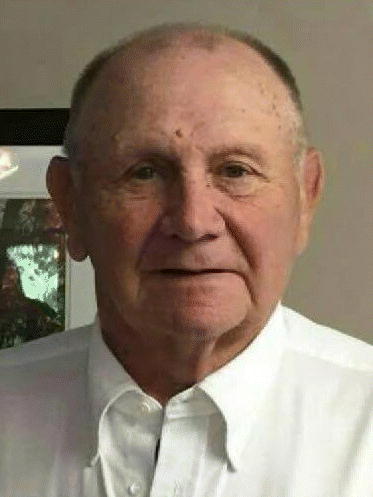‘Narcan Lady’ provides free opioid-overdose antidote in Jessamine County
Published 4:25 pm Thursday, December 8, 2022

- Glinda Smith is part of a UK study brining Naxolone to Jessamine County (Photo by Gillian Stawisynski)
|
Getting your Trinity Audio player ready...
|
A University of Kentucky prevention specialist is providing Naloxone training with a free box of the medicine in Jessamine County until December 2023.
Naloxone is an opioid-overdose antidote. It is also commonly referred to as Narcan, one brand name of the medicine. Naloxone should be used on anyone showing signs of opioid overdose like excessive sleepiness, unresponsiveness and breathing problems. Even pets can be saved from an overdose using Naloxone. However, this medicine does not replace medical care, as a body can overdose again after receiving Naloxone. Still, it does bide time to be able to reach the hospital.
Some already know this prevention specialist as the ‘Narcan Lady.’ Her name is Glinda Smith. She’s been coming to Jessamine County since September 1, 2022, as part of the second round of UK HEALing Communities Study.
UK HEALing Communities Study
In 2019, the National Institute of Drug Abuse and the Substance Abuse and Mental Health Services Administration awarded $87 million to a team of researchers at UK. This award funds the HEALing Communities Study to increase access to and retention in treatment services for opioid use disorder, expand naloxone distribution, and reduce risky opioid prescribing.
According to Kentucky’s Drug Overdose Report, 2,250 Kentuckians died from drug overdoses in 2021. This is a 14.5% increase compared to 2020.
Opioid use disorder involves physical health, mental health, and social issues. According to the study’s webpage, there is little linkage between different service providers, which makes it challenging to provide the best care for people with substance use disorders.
Of Kentucky’s 120 counties, UK chose 16 of the most affected counties to meet the study’s goals.
- To reduce opioid-related overdose deaths by 40% over three years.
- To collaborate with state and community partners to implement evidence-based interventions.
- To save lives, help people receive recovery support services, reduce harm, and inform the nation on what strategies will help us heal from the opioid crisis.
These counties are a mix of rural and urban, and each of them met a set of criteria; Must have had 25 or more opioid-related deaths per 100,000 people in 2017, must have a harm reduction program (i.e., a syringe service program through the public health department) in place, must have the need for improved justice, treatment, and public health infrastructure and must not already be involved with a separate UK substance use intervention project.
Amy Longwill, the Boyle & Jessamine Community Coordinator in this project, said that the overarching goal of the prevention specialists is to “Blanket the community with Naloxone. We want to get it in as many people’s hands as possible.” She said this work should make first responders out of everyone e- people in businesses, community members, and government officials. “We want everybody to know what it is and to know how to use it.”
Glinda’s Story
Before working with this study at UK, Smith did work for another agency for three years. She was a peer support specialist, helping people to get to long-term recovery.
Naloxone saved Smith’s life. She recently reached her seventh anniversary of recovery from opioid use disorder. She said her journey is what brought her here today. “
I just wanted to use the messages and the lessons that I’ve learned to pass it on to the community and help them in this way,” Smith said, “I think it’s like a full circle to get to be out and work with these high-risk communities.”
Since September, Smith has done naloxone training and handed out Naloxone at public parks, the Jessamine County Public Library, the Main Street Dollar Tree, and the Goodwills at East Brannon Road and Main Street. She also often partners with recovery centers like the Isaiah House and Shepherds House to provide community members with further resources.
So far, Smith has given out 1,003 boxes of Naloxone. She sees this as potentially 1,003 lives saved.
According to Smith and the state-wide study, one of the main challenges is fighting against the stigma against people with drug use disorders, the medicines used to treat opioid use disorder, and medical practitioners who treat individuals with substance use disorders.
Some who see Smith at her table will ask why she isn’t giving out medicine for diabetes or epi-pens.
“I answer that, that would be wonderful if they would give them to me. I’d pass those out too. I only have Narcan,” Smith said
Others accuse Smith of enabling people. She usually tries to explain the purpose of her being in the community for the study.
“This doesn’t mean you hang around people who use drugs or you are using drugs. It means that you love your community, you love your family, you love the people around you, and you’re willing to try to save a life if it ever came to that,” Smith said.
Smith also has heartwarming stories about this work. Moms, aunts and other family members will come up to her and tell her they have a loved one dealing with drug use. She tells them her story to give them hope.
“I tell them to keep loving them and set good boundaries with them. Never give up, and show them you love them. There is hope because here I stand, seven years in recovery when I never thought that would happen,” Smith said.
She has recently begun working with individuals from Jessamine County on probation and parole. Due to this, she doesn’t have a set schedule. However, you can always find her on Tuesdays from 1 to 3 p.m. at either the East Brannon Road or Main Street Goodwills in Nicholasville. She alternates between these two locations each week.
Smith typically will keep the study’s Jessamine County Facebook page updated with her whereabouts at www.facebook.com/kyhealjessamine. You can also reach her with questions by email at Glinda.Smith@uky.edu or by her office phone at 859-562-3597.
Smith is available to visit organizations, businesses, and government events to train staff and give out boxes of Naloxone.



